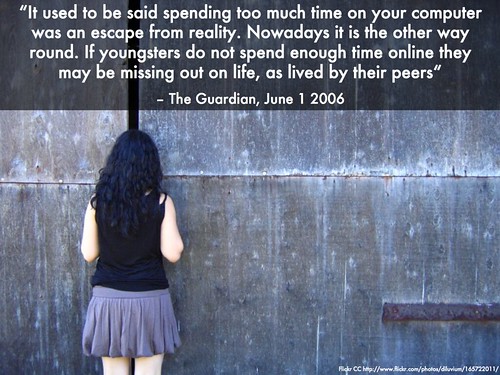Over the last ten years there have been some great advances in technology. We now have video conferencing straight from our desktops, video phone calls via 3G phones, realtime collaborative applications such as Campfire and instant messaging from YahooMSN. But it doesn’t matter how much technology we throw at our customers, they all want to meet face to face.
Kathy Sierra talks about the way that seeing Radiohead live changed the way that her daughter, Skylar, views (and listens to) the Radiohead CDs in Kathy’s collection. The product remains the same, but the experience of the product has changed profoundly. There has been a layering of experience, recognition and pleasure that has now been transferred onto the unchanged product — meaning that one performance by Radiohead has changed NOT the product but the USERS.
I love this story. It reminds me of similar concerts by Nick Cave, The Go Betweens, Sonic Youth, Indigo Girls, Midnight Oil and many other bands that I attended years ago. All of these concerts made me re-listen to my CDs and records (yes, vinyl … and I still have them!). On the other hand, a very poor concert by a much-loved REM made me relegate the CDs to the back of the cupboard.
Live performance can work both ways. It can transform and amaze and it can also disappoint.
When it comes to marketing and communication, we can spend a great deal of time and effort in developing a messaging strategy, implementing just the right design, crafting the copy and timing the delivery. And because I quite like writing, I can often become lazy, choosing to write an email over making a phone call. But sometimes, it is better to make a call and arrange a face to face meeting.
In fact, it is ALWAYS better to meet face to face for one simple reason — the need to communicate. Communication does not happen in a vacuum … there are a whole range of signals, moods, nuances etc that you send and receive during a conversation. These can be exceptionally subtle and may only be understood on a subconscious level — I am sure we all have stories about finishing a meeting and exclaiming "that was a great meeting" — but not have anything tangible to base this on (like a signature on a piece of paper). What we are reading in these instances are all the non-verbal cues, we are sensing the good will, the exuberance and positive energy that was exchanged. We are reading the PERFORMANCE of the meeting.
This is why face to face wins (see also this great post by Kathy Sierra). It is why a great performance by your favourite artist can change your perception. It is about giving more than 100 percent. It is about creating an authentic moment that can create the opportunity for change. Such a moment needs trust, commitment and open communication. It needs a human face.
S.
 Yesterday I was cheerfully spruiking this great set of images on Flickr … and then I started getting feedback about Flickr being out of action!
Yesterday I was cheerfully spruiking this great set of images on Flickr … and then I started getting feedback about Flickr being out of action!

